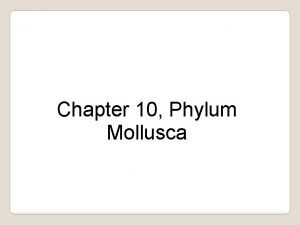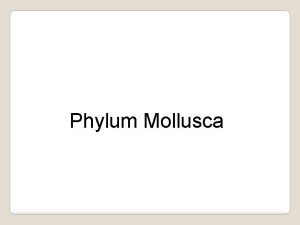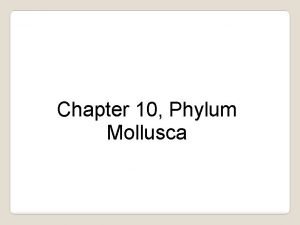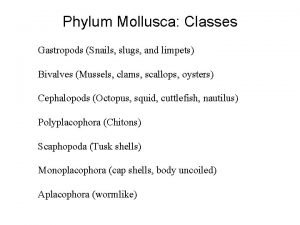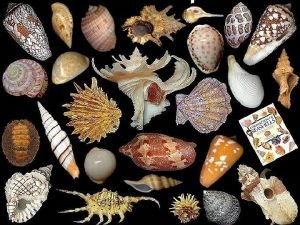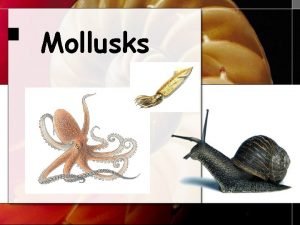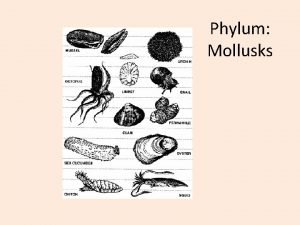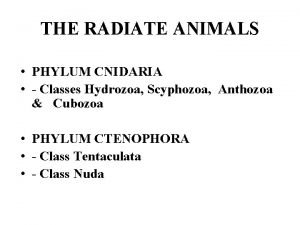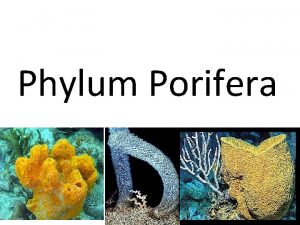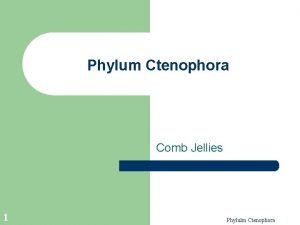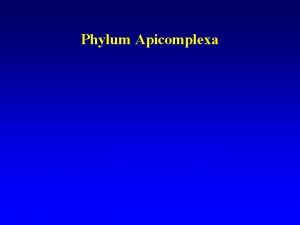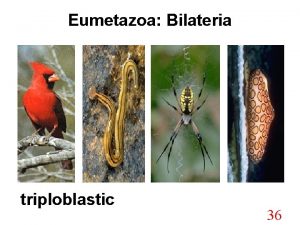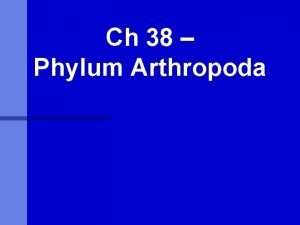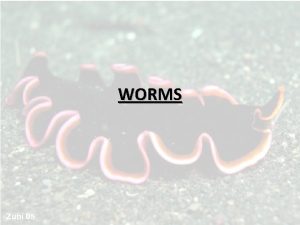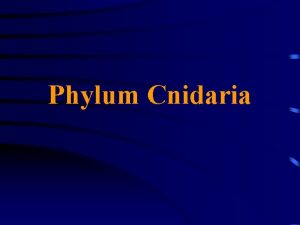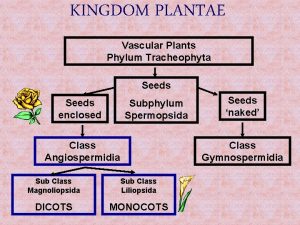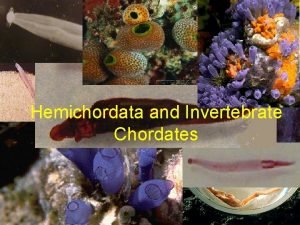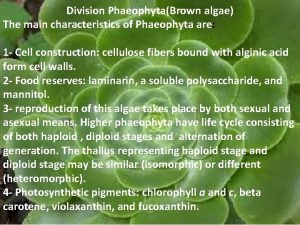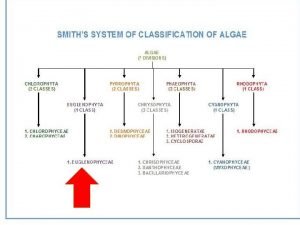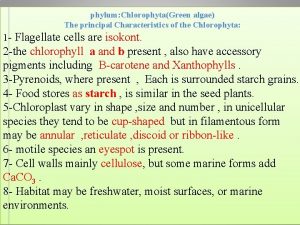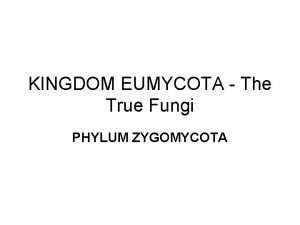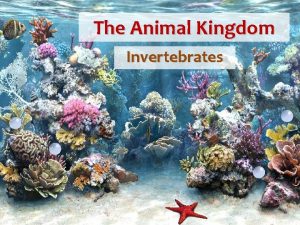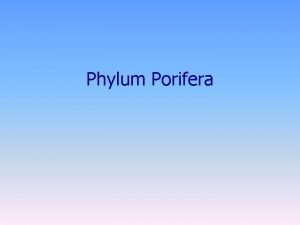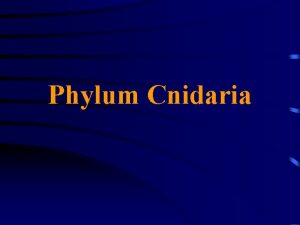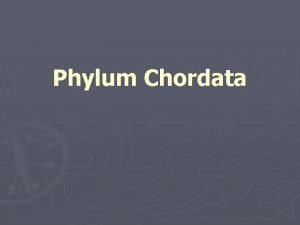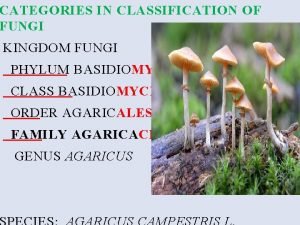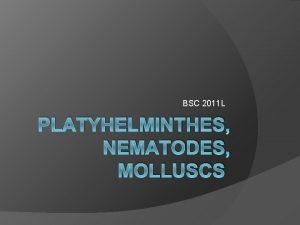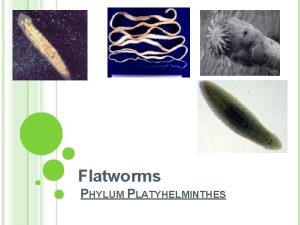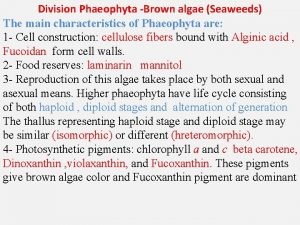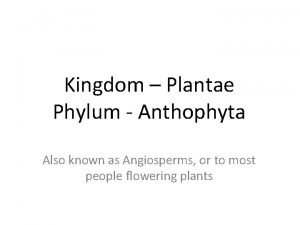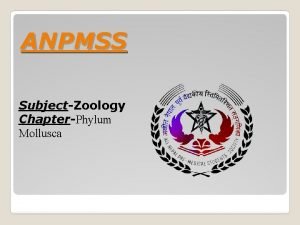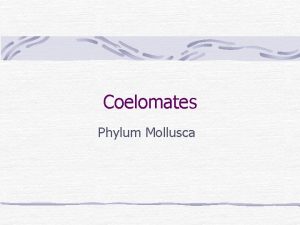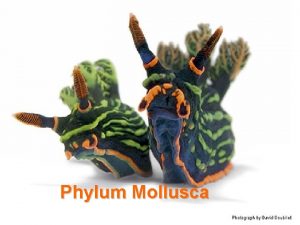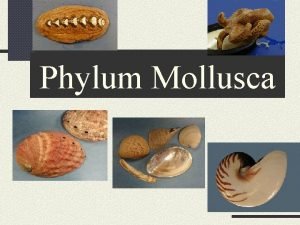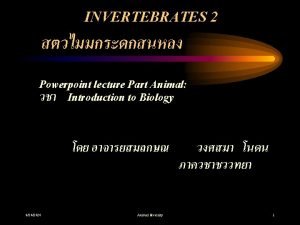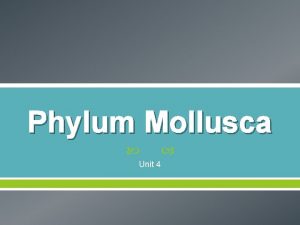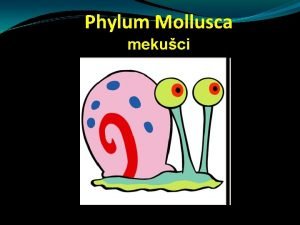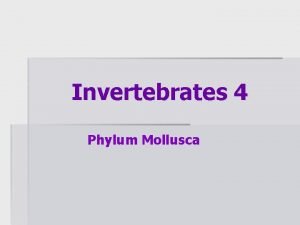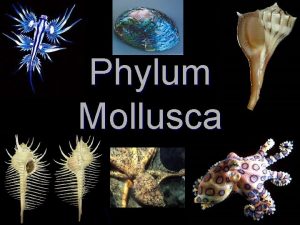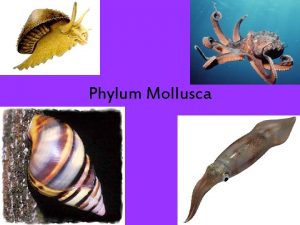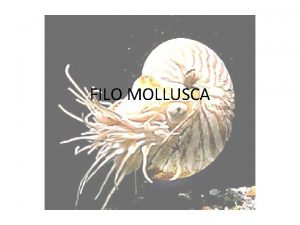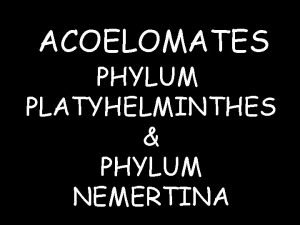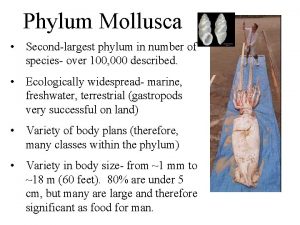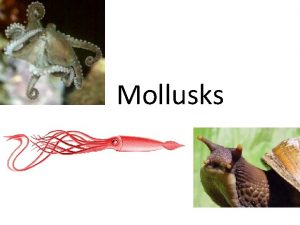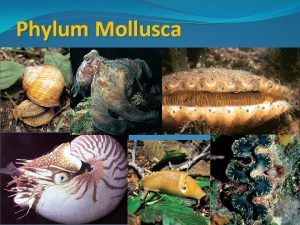Chapter 10 Phylum Mollusca Characteristics of Phylum Mollusca




































- Slides: 36

Chapter 10, Phylum Mollusca

Characteristics of Phylum Mollusca Bilaterally symmetrical (Bilaterally asymmetrical in some), protostomes, and coelomate body cavity. Mollusks have a muscular foot that is the primary organ used for locomotion. Dorsal body wall forms a mantle, which is a sheath of skin that houses the internal organs and secretes a shell in some mollusks (shell is absent in some). Most mollusks have a rasp-like tongue called the radula. Most mollusks have an open circulatory system that drains into sinuses, (except cephalopods which have a closed circulatory system).

Characteristics of Phylum Mollusca Respiration occurs by gills, through the mantle cavity, or through the mantle. Excretion of waste occurs by one or two metanephridia (simple kidneys), which empty into the mantle cavity. Nervous system consists of cerebral ganglia. Organ systems are well-developed. Most mollusks have two larval stages called a trochophore and a veliger.

General Mollusk Anatomy

Trochophore Larva

Veliger Larva

Ecology of Phylum Mollusca Mollusks live in a wide variety of habitats. Basically every aquatic habitat from high mountain lakes to the ocean bottom. Ecological niches include bottom feeders, grazers, carnivores, and filter feeders. Mollusks are used as food by humans and cultivated for their pearls. Some can be destructive like zebra mussels which damage the intake systems of water treatment facilities and power plants, and shipworms that destroy wooden ships.

Shipworms

Zebra Mussels

Mollusk Anatomy The body of a mollusk consists of a head-foot portion, and a visceral mass portion. The head-foot consists of the head, mouth, radula, eyes, tentacles, and the muscular foot. The visceral mass consists of digestive, circulatory, respiratory, and reproductive organs.

Mollusk Anatomy The visceral mass is contained in the Mantle. The outer surface of the mantle produces the shell made of calcium carbonate and protein. The Mantle Cavity houses respiratory organs like gills, and it can also be a respiratory organ itself.

Mantle Cavity

Mollusk Anatomy Most mollusks have an open circulatory system with a heart, blood vessels, and blood sinuses Cephalopods (octopus, squid etc. ) have a closed circulatory system with a heart, blood vessels, and capillaries. Most mollusks pass through a free-swimming larva stage called a trochophore larva. Some mollusks, develop further into another larva stage called a veliger larva.

Open Circulatory System

Class Monoplacophora Single cap-like shell Mantle cavity with five or six pairs of gills Radula present Separate sexes Found at extreme depths (abyssal zone) Only about 10 species known (possibly 11 -20) Thought to be extinct until around 1952 Ex. Neopilina galatheae

Class Polyplacophora Chitons Flattened (convex) body, head reduced mostly found close to shore (littoral zone) Radula present Shell of seven or eight dorsal plates (usually 8) Separate sexes Trochophore, but no veliger larva

Polyplacophora (Chitons) Chitons are somewhat flattened and have a convex surface that bears eight (sometimes seven) calcareous plates or valves

Class Scaphopoda Tusk shells Tube-shaped shell Cone-shaped foot Head absent, mouth with radula and tentacles Mostly found in the benthic zone Respiration occurs through the mantle Sexes separate Both trochophore and veliger larva exist

Class Gastropoda Snails and relatives Bilaterally asymmetrical in a coiled shell (shell absent in some) Well-developed head Radula present Dioecious and monoecious Most with a trochophore and veliger larva

Class Gastropoda Most diverse class of mollusks; includes the snails, limpets, slugs, whelks, conchs, periwinkles, sea slugs, sea hares, sea butterflies and many others. Snails have a hard protein plate called the operculum, that protects the body and prevents loss of water.

Class Bivalvia (Pelecypoda) Body enclosed in a twolobed mantle and shell with a hinge No head, radula or eyes (some have eyes like the bay scallop) Plate-like gills (and siphons) Wedge-shaped foot Sexes separate trochophore and veliger larva exist

Blue Eyes on a Bay Scallop

Bivalves (Pelecypods) Two-shelled mollusks that include mussels, clams, scallops, oysters, shipworms etc. Most bivalves are suspension feeders that depend on their gills (and siphons) to collect food. Two shells or valves, held together by a hinge ligament, which keeps the two valves open. Adductor muscles work antagonistically against the hinge ligament to close the valves shut.

Hinge Ligament/Adductor Muscles

Bivalve Reproduction and Mimicry Some bivalves produce special veliger larva called glochidia. The pocketbook mussel (Lampsilis ovata) mimics a small minnow. When a bass comes to eat the minnow decoy, glochidia rapidly shoot out and attach to the gills of the bass.

Class Cephalopoda Octopus, Squid, Cuttlefish, Nautilus Shell is reduced or completely absent Head and eyes are welldeveloped with radula Head with arms and tentacles Well-developed brain for an invertebrate Separate sexes Marine predators

Cephalopods The name cephalopod means head-foot Their body shape is unusual in that the head and muscular foot are indistinguishable. The foot of a cephalopod is the arms, tentacles, for hunting and mating, and the funnel, used for expelling water from the mantle cavity by way of jet propulsion. Many cephalopods have an ink sac that is used as a smoke screen to confuse enemies and/or predators. Cephalopods have strong beak-like jaws that grasp prey, and the radula tears off pieces of flesh. Many cephalopods have salivary glands that secrete venom used to immobilize their prey.

Anatomy of a Squid

Squid Anatomy

Giant Squid (Architeuthis sp. ) Very little is known about the life of a giant squid because no one has ever been able to study a living specimen. The anatomy has only been studied from specimens stranded on beaches, those caught in fishermen's nets, and those taken from the stomachs of sperm whales. Total length up to 13 meters (43 feet). Eyes are up to 25 cm wide (10 inches). Live at depths of 1000 meters (1 km).

Giant Squid (Architeuthis sp. )

Colossal Squid (Mesonychoteuthis hamiltoni) Maximum size 15 meters (49 feet). Colossal Squid's suckers are armed with sharp hooks. Largest eyes in the animal kingdom; up to 27 cm (11 inches). Found in Antarctic waters. Can reach depths of 2000 meters (2 km).

Colossal Squid (Mesonychoteuthis hamiltoni)

Color Changes in Cephalopods Most cephalopods have special pigment cells called chromatophores in their skin. Chromatophores expand contract to produce color changes controlled by their nervous system. Cephalopods can change color for camouflage, and to communicate with other cephalopods. Many deep sea squid are also bioluminescent.

Chromatophores

Mollusk Taxonomy Monoplacophora-singleshelled mollusks Polyplacophora-chitons Scaphopoda-tusk shells Gastropoda-snails, slugs Bivalves (Pelecypoda)clams, oysters, mussels Cephalopoda-octopus, squid, nautilus, cuttlefish
 Mollusk characteristics
Mollusk characteristics Characteristics of mollusca
Characteristics of mollusca General characteristics of phylum mollusca
General characteristics of phylum mollusca Mollusca
Mollusca Limpets phylum
Limpets phylum Phylum mollusca homework and study guide #1
Phylum mollusca homework and study guide #1 Moruska
Moruska Snails phylum
Snails phylum 4 classes of mollusks
4 classes of mollusks Life cycle of obelia
Life cycle of obelia Phylum porifera characteristics
Phylum porifera characteristics Apical sense organ ctenophora
Apical sense organ ctenophora Cnidaria characteristic
Cnidaria characteristic Arthro drama
Arthro drama Apicomplexa examples
Apicomplexa examples Eumetazoa
Eumetazoa Arthropoda
Arthropoda Phylum platyhelminthes characteristics
Phylum platyhelminthes characteristics Characteristics of euglenophyta
Characteristics of euglenophyta Phylum cnidaria general characteristics
Phylum cnidaria general characteristics Maple tree phylum
Maple tree phylum Hemichordata characteristics
Hemichordata characteristics Characteristics of phylum phaeophyta
Characteristics of phylum phaeophyta Chrysophyta characteristics
Chrysophyta characteristics Characteristics of chlorophyta
Characteristics of chlorophyta Class zygomycota
Class zygomycota Phylum platyhelminthes characteristics
Phylum platyhelminthes characteristics Porifera
Porifera General characteristics of cnidaria
General characteristics of cnidaria Basic characteristics of chordates
Basic characteristics of chordates Fungi phylum classification
Fungi phylum classification Phylum rotifera characteristics
Phylum rotifera characteristics Characteristics of phylum ascomycota
Characteristics of phylum ascomycota Unsegmented worms phylum
Unsegmented worms phylum Fucus vesiculosus kingdom and division
Fucus vesiculosus kingdom and division Ventral sucker
Ventral sucker Tumbuhan anthophyte
Tumbuhan anthophyte
